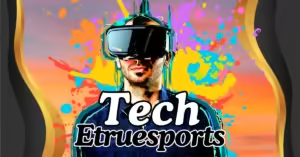In the ever-evolving world of technology, few companies have captivated the public’s imagination quite like Tesla. Known for revolutionizing the automotive industry with electric vehicles, Tesla is now setting its sights on the future of humanoid robots with its latest innovation—Tesla Optimus. Elon Musk unveiled the robot, also referred to as Tesla Bot, with the vision of creating an autonomous, AI-powered robot that can take on repetitive, dangerous, or labor-intensive tasks.
But what exactly is Tesla Optimus, and how will it impact industries and everyday life? In this blog post, we’ll dive into Tesla Optimus, explore its groundbreaking features, and discuss the implications of this ambitious project for the future of robotics.
What is Tesla Optimus? An Introduction to Tesla’s Humanoid Robot
Tesla’s humanoid robot, also known as Tesla Bot, is being developed by the company’s robotics division. Elon Musk introduced this concept during Tesla’s AI Day event in 2021. Unlike industrial machines designed for specific tasks, this humanoid robot is intended to be a general-purpose assistant capable of performing a variety of tasks that are either unsafe or mundane for humans.
Standing at approximately 5 feet 8 inches tall and weighing around 125 pounds, Tesla Optimus will have a human-like form. The robot’s primary purpose is to perform tasks that people may find repetitive, dangerous, or time-consuming. According to Musk, Optimus is being designed to handle jobs like factory work, assisting in daily household tasks, and even caregiving.
Tesla’s entry into the robotics space is significant because it is powered by the company’s existing AI and autonomous driving technologies, which have already set new standards in the automotive industry.
Tesla Optimus Features and Specifications: What Makes It Unique?
One of the most exciting aspects of Tesla Optimus is the technology and cutting-edge features it boasts. Here’s a breakdown of some of the key features and specifications that set Tesla’s humanoid robot apart:
1. AI-Powered Intelligence
At the core of Tesla Optimus is its AI-driven intelligence, derived from Tesla’s work in self-driving car technology. The same AI algorithms used in Tesla’s autonomous vehicles will be applied to make Optimus capable of navigating complex environments, recognizing objects, and completing tasks without human supervision.
2. Full-Body Dexterity
Tesla Optimus will feature full-body dexterity, with arms and hands that can perform precise tasks. The robot will have 40 mechanical actuators, giving it the flexibility and range of motion to perform intricate tasks that require human-like dexterity, such as picking up objects, using tools, or even assembling products.
3. Energy Efficiency
Tesla Optimus is designed to be highly energy-efficient. Powered by Tesla’s proprietary battery technology, the robot can operate for extended periods without needing frequent recharging. This makes it practical for use in industries like manufacturing, where robots are required to work long hours without interruption.
4. Human-Friendly Design
Tesla Optimus has been built with human interaction in mind. Its design is non-threatening, with a sleek appearance and smooth movements, making it suitable for environments where it needs to work alongside people. Tesla’s goal is to ensure that the robot can operate safely in public spaces, homes, and workplaces.
5. Safe and Autonomous Navigation
Using Tesla’s advanced Autopilot and Full Self-Driving (FSD) technology, Optimus will be able to navigate spaces autonomously. It will use cameras and sensors to detect obstacles, identify safe paths, and perform tasks in real-time. This makes Optimus capable of working in dynamic environments where it may encounter people, moving machinery, or unpredictable hazards.
These features place Tesla Optimus ahead of many other robots currently being developed, offering a combination of AI, safety, and precision that is unprecedented in the robotics industry.
How Tesla’s Robot Could Revolutionize Industries
The potential applications of this new humanoid robot go beyond novelty—this creation could disrupt several industries. Here are some sectors that could benefit:
1. Manufacturing and Logistics
Tesla Optimus could be a game-changer in manufacturing and logistics by taking on repetitive tasks that are currently performed by human workers. From assembling products on production lines to managing inventory in warehouses, the robot could streamline operations and reduce labor costs. Its ability to work autonomously and around the clock without tiring will boost efficiency in large-scale industrial settings.
2. Healthcare and Caregiving
One of the more socially impactful applications of Tesla Optimus could be in healthcare and caregiving. With the aging population in many countries, there is a growing demand for caregiving services. Optimus could assist with daily tasks such as lifting patients, providing medication, or even offering companionship, helping alleviate some of the burden on caregivers.
3. Retail and Hospitality
In retail and hospitality industries, Tesla Optimus could be used to manage stock, serve customers, and perform routine tasks such as cleaning or organizing products. This would allow human workers to focus on higher-value tasks, like customer service and management, while Optimus handles the more labor-intensive duties.
4. Home Automation
In the future, Tesla Optimus could become a staple in homes, helping people with daily chores like cleaning, cooking, or gardening. Its autonomous navigation and task completion capabilities could reduce the time spent on household maintenance, giving people more freedom to focus on other aspects of their lives.
5. Dangerous Jobs
From construction sites to hazardous waste management, there are many industries where safety is a major concern. Tesla Optimus could take on dangerous tasks, reducing the need for human workers to expose themselves to risk. Whether it’s working in extreme weather conditions or handling hazardous materials, Optimus offers a safer alternative.
Tesla’s AI and the Future of Autonomous Robotics
Tesla’s new robot is powered by advanced artificial intelligence, with much of its technology rooted in the company’s experience in developing autonomous vehicles. This gives Tesla a head start in building machines that can think and act independently. Here’s how AI is driving this advancement:
1. Machine Learning and Object Recognition
Tesla Optimus uses machine learning to improve its decision-making capabilities. Through neural networks, the robot can recognize objects, understand its environment, and perform complex tasks that would normally require human intervention. This level of autonomy allows Optimus to adapt to various environments without needing constant programming or supervision.
2. Self-Improving Algorithms
Tesla’s AI system is designed to continuously learn and improve over time. Just as Tesla’s autonomous vehicles use data from millions of miles driven to enhance performance, Tesla Optimus will learn from its experiences, refining its abilities to carry out tasks more efficiently.
3. Real-Time Response
One of the most significant advancements in Tesla Optimus is its ability to respond in real-time. Using a combination of cameras, sensors, and AI algorithms, Optimus can make instant decisions based on its surroundings, enabling it to work in dynamic environments such as factories, homes, and offices.
When Will Tesla Optimus Be Available?
Since its announcement in 2021, many people have been eagerly awaiting news of Tesla Optimus’s release date. While Elon Musk hinted at a working prototype by 2022, the commercial availability of the robot is still in development. Early versions of Optimus are expected to be used in Tesla’s own factories before being rolled out for wider use.
As for the price, it’s too early to pinpoint an exact figure, but experts estimate that Tesla Optimus could be available for purchase at a competitive price compared to other high-end robots. It is likely that Tesla will offer different models with varying levels of functionality to suit both businesses and consumers.
The Future of Robotics: How Tesla Optimus is Leading the Way
Tesla’s humanoid robot represents a significant step forward in the world of robotics. While robots have been used in industrial settings for years, Optimus is unique in its design, intelligence, and potential to interact with humans on a more personal level. Elon Musk envisions a future where Tesla Optimus can take on tasks that are not only labor-intensive but also dangerous, freeing up human workers to focus on creative and intellectual pursuits.
1. Shaping the Future of AI Robotics
As Tesla continues to refine its AI technology, we can expect Optimus to become more sophisticated and versatile. In the long term, humanoid robots like Optimus could be integrated into everyday life, from home assistance to public services, changing the way society functions.
2. Ethical Considerations and Challenges
With the advancement of AI-powered robots like Tesla Optimus, there will also be ethical challenges to consider. As robots take on more human tasks, questions about job displacement, privacy, and security will arise. However, with proper regulation and ethical guidelines, Optimus could prove to be an invaluable tool in helping humanity progress.
FAQs About Tesla Optimus
- What is Tesla Optimus?
- Tesla Optimus is a humanoid robot designed by Tesla to perform a variety of tasks, including factory work, caregiving, and household chores, using AI-powered technology.
- When will Tesla Optimus be available?
- While a prototype was expected in 2022, a commercial release date for Tesla Optimus is still under development, with Tesla planning to use it in its factories first.
- How much will Tesla Optimus cost?
- The exact price of Tesla Optimus has not been announced yet, but it is expected to be competitively priced compared to other humanoid robots.
- What industries could benefit from Tesla Optimus?
- Tesla Optimus could revolutionize industries like manufacturing, healthcare, logistics, and home automation by handling repetitive, dangerous, or labor-intensive tasks.
- What technology powers Tesla Optimus?
- Tesla Optimus is powered by AI and machine learning algorithms, similar to those used in Tesla’s self-driving cars, enabling it to navigate spaces autonomously and perform tasks without human supervision.
- Will Tesla Optimus replace human workers?
- While Tesla Optimus can handle certain tasks, it is intended to work alongside humans, improving efficiency and safety rather than fully replacing human jobs.
- How autonomous is Tesla Optimus?
- Tesla Optimus is designed to operate autonomously using AI, but it can also be programmed to perform specific tasks. Its sensors and cameras allow it to respond to real-time environments.
Conclusion
Tesla Optimus represents a monumental step forward in the field of robotics, combining cutting-edge AI technology with Tesla’s expertise in automation and innovation. With the potential to revolutionize industries such as manufacturing, healthcare, logistics, and home automation, Optimus is more than just a concept—it’s a glimpse into the future of robotics and how machines can assist and collaborate with humans in day-to-day tasks.
While the full capabilities and commercial availability of Tesla Optimus are still under development, the possibilities it presents are exciting. Whether it’s improving efficiency in factories or offering assistance in homes, Optimus could dramatically change how we approach both manual labor and personal tasks. With Tesla leading the charge in advancing AI-powered robotics, Tesla Optimus is set to redefine what’s possible in the world of humanoid robots, paving the way for a future where technology works hand-in-hand with humanity.
As Tesla continues to refine and develop Optimus, one thing is clear: the future of robotics is here, and Tesla Optimus is at the forefront of this revolution.
Looking for more innovative tips and trends in technology? Visit our homepage for cutting-edge insights and expert advice!




